Contents
What is a Microwave PCB?
Microwave PCBs are boards with designs that allow them to work between medium to very high frequencies.
Also, microwave PCBs require unique tech and materials, which many manufacturers cannot provide. Hence, you need to note this when designing these PCBs.
The microwave PCB was perfect when the military needed technology for high-frequency applications. However, it was so expensive that a regular DIYer or engineer wouldn’t dream of making one.
However, with the introduction of many commercial and professional products, microwave PCBs became common. Now, we have these boards in wireless communication devices like wireless networks, satellite broadcasters, and cell phones.

Mobile Phones
Differences Between RF and Microwave PCBs
The primary difference between these boards lies in their radio frequencies. RF PCBs have a wide range of signal frequencies. A typical RF board’s frequency ranges between 50 MHz to 1 GHz.
Conversely, microwave PCBs can operate with frequencies beyond 1 GHz. Their currently known limit is about 30 GHz, making them useful for very high-bandwidth signals.
However, one common point between the boards is that designers use them for receiving and transmitting applications. Moreover, the signal determines what board will fit the application.
Microwave PCB Advantages
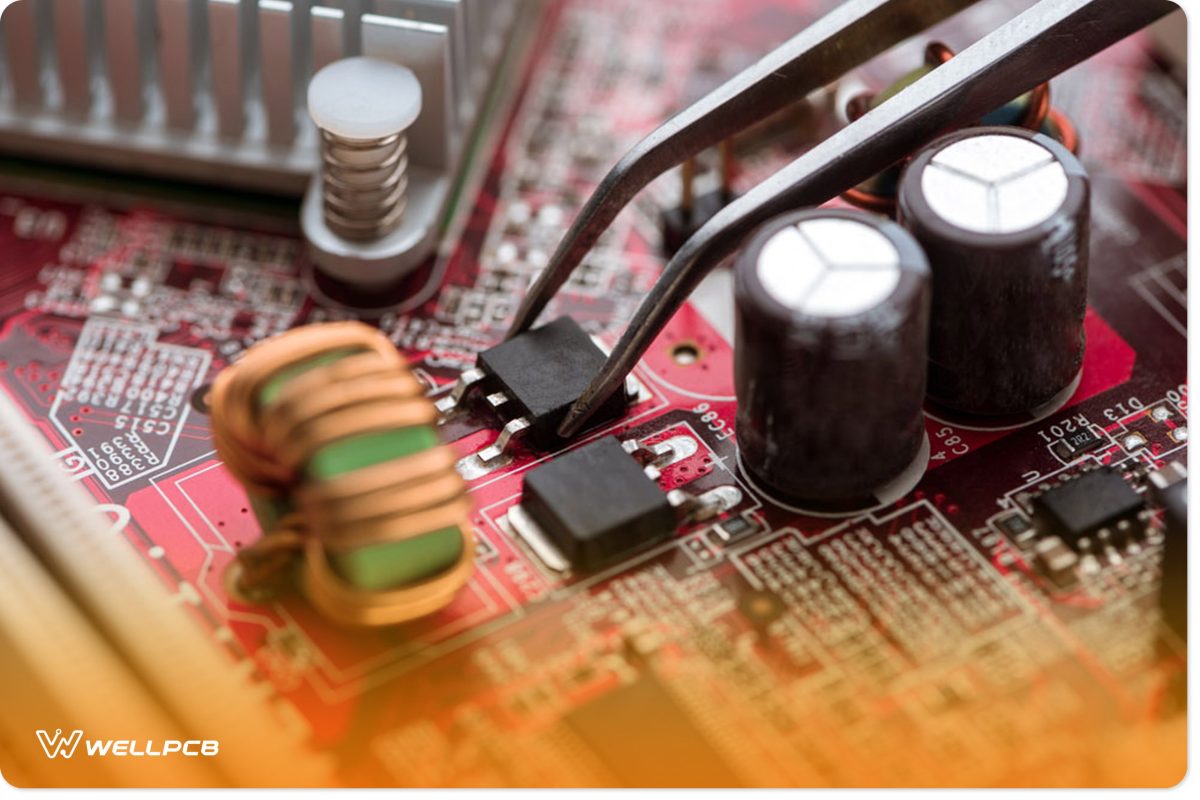
Circuit Board
Microwave PCB designs are popular now that electronics are part of our daily activities. The board has several advantages that make it worthy of its popularity. So, let’s take a closer look at these pros.
Faster than Regular Circuits
Microwave PCBs feature low tangent and loss consistency, which allows the board to receive and transmit less impudent signals faster.
Microwave PCBs can have Many Layers.
You can use low-CTE components to build your microwave PCB. For this reason, it’s easy to stack multiple layers and align them to form detailed patterns.
Stable as a Rock
The microwave PCB design is stable and works properly even in extreme temperatures. Plus, you can go beyond the limit and run the microwave PCB at 40 GHz—but only if you employ analog applications.
Not as Expensive
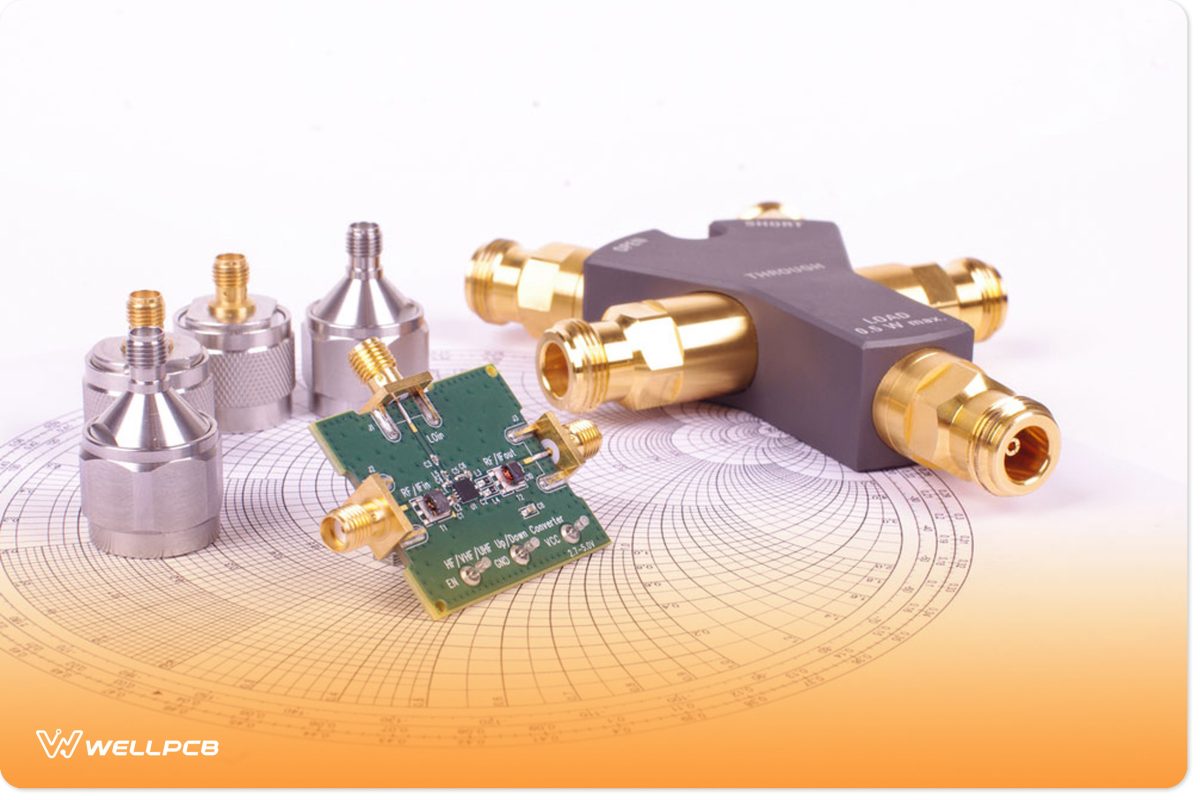
Radiofrequency mixer printed circuit board.
Mixing your materials in a panel storage system can reduce the assembly cost. You won’t have to sacrifice performance, so you’ll get a reduced price and optimum performance.
Easy-to-Install Components
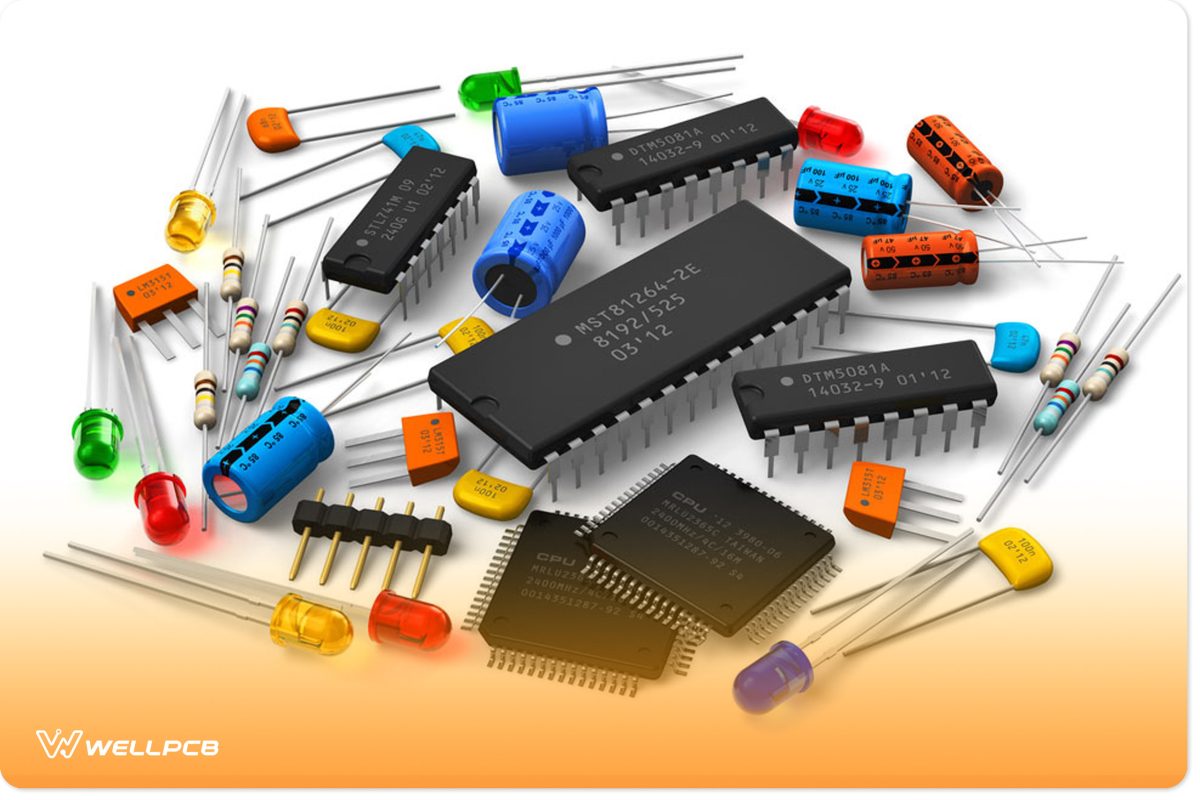
Electronic Components
You won’t have a hard time installing components on a microwave PCB. In fact, you can put even delicate-pitch components on this board without hiccups.
Microwave PCB Materials
When designing higher-frequency PCB components, various things must be considered, especially if you want the best laminate circuit performance for your board. These include overindulgence features, dielectric constants, conductivity constant (DK), current conductivity, and thermal expansion coefficient (CTE).
Quite a few materials pass the checkmarks. For instance, we have Polytetrafluoroethylene (PTFE), which most PCB cover workers use for different frequencies.
Plus, PTFE has excellent dielectric characteristics and even comes fabricated with thermoplastic fluoropolymer.
But that’s not the only thing you need to note. The factory also has an important role.
Here are some material suppliers you can get the best microwave PCB materials:
Materials from Rogers
Rogers is not only the world’s oldest major public corporation, but it was also the first to develop RT/Durood materials for electronic appliances.
Also, RT/duration is one of the leading materials in the PTFE family for fast microwave PCBs. However, for the best accuracy, you’ll need a PTFE laminate with specific systems and materials.
You must also consider the material’s substantial capability, as different substances vary when handling PCBs. For example, we recommend using Teflon for your PTFE-based formulations.
Additionally, you can find these solutions on non-stick pans. So, ensure you have the proper knowledge. Otherwise, it’ll be challenging to deal with these materials.
Higher DK Materials
If you want PCB materials for PA and LNAs, you’ll need materials with higher Dk values. These materials work with specific impedance and frequency ranges, which reduces the circuit’s dimensions when needed.
Moreover, your circuit’s wavelength depends on the material and frequency. PCB substances with greater DK values can run routing algorithms at lower frequencies.
More importantly, circuits with higher DK materials will create miniature PCBs that work for courses that depend on wavelengths, like filters and antennas.
Additionally, Traditional materials for microwave PCBs are usually between 2 to 6 DK ranges.
Hence, we identify materials above DK 6 ranges as high DK board materials.
Panasonic MEGATRON 6
Panasonic’s MEGATRON 6 is an excellent laminate material for induction motors like grid equipment, IC testing systems, high-frequency measurement equipment, and data centers.
It’s famous for its low dielectric dissipation, excellent thermal expansion, and reduced transmission loss features.
PTFE (Teflon) for Microwave PCB
PTFE is a polymeric substance with zero resistance, making it great for high-speed applications requiring high frequency.
Also, it’s a flexible and lightweight material with many uses in various sectors. Plus, it can endure high temperatures, resist flames, and offer increased durability.
Taconic Microwave Materials
Taconic provides some of the best applications with silicone-covered PTFE materials, panels, and tapes. Their primary focus is the low DK CTE PTFE laminates with thermal stability.
These laminates are robust for manufacturing RF/microwave PCBs. Most Taconic devices offer the best loss-insertion features and low fiberglass percentages. Thanks to the laminate material, these devices also provide uniform refractive indexes on the cover.
FR-4 Material
Indeed, FR-4 is the most common material in PCB manufacture. It’s a laminate epoxy with increased durability, weight, and tensile strength. Plus, it’s waterproof and mostly inflammable.
PCB Design Basics
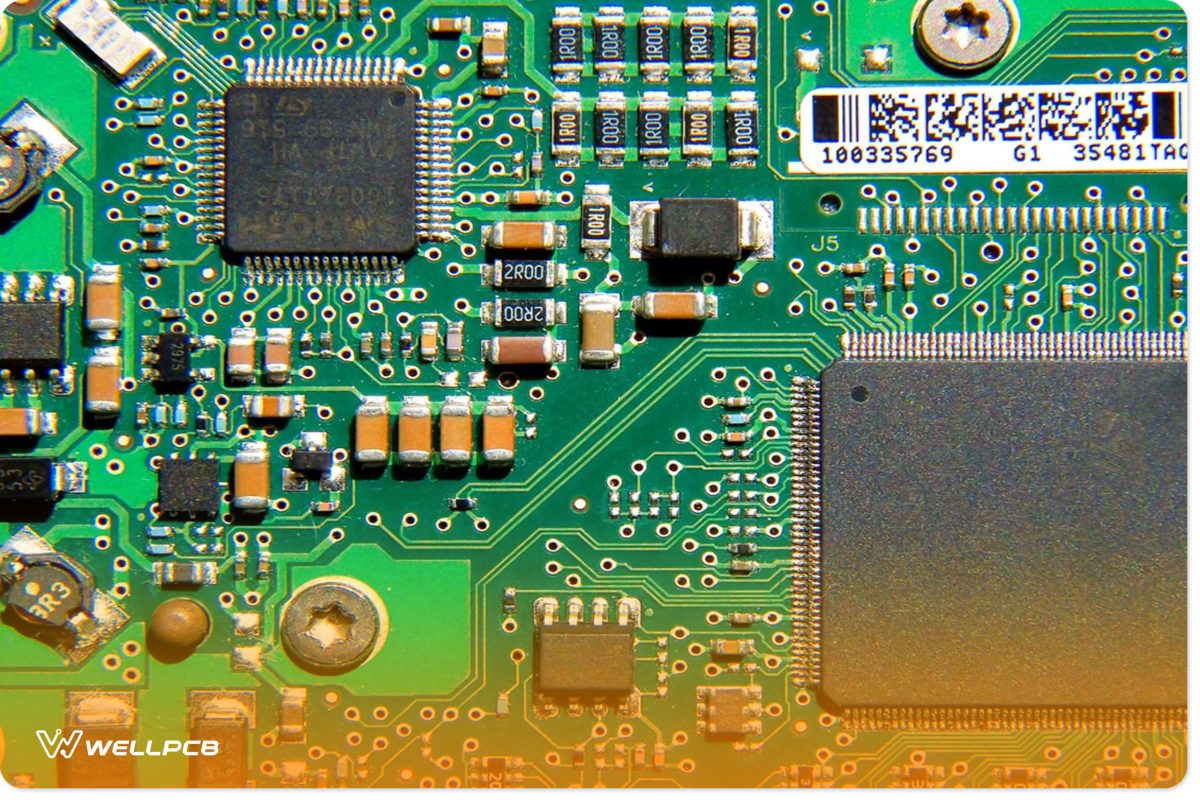
PCB Design
When designing microwave PCBs, you must minimize any potential errors during assembly. Hence, you must understand the basics. Here are some basic design layouts:
- If your board has multiple parts, ensure you separate them. This will help you avoid mixing up your components, make it easier for your PCB manufacturers, and avoid any assembly problems.
- Ensure your microwave PCB has more than one layer. The top layer should host your microwave signal lines, components, and power stage. You must also have a ground layer under the layer hosting your microwave signal lines.
- Note that microwave PCBs are noise-sensitive and susceptible to a wider noise variety. For this reason, you must reduce the possibility of reflection, ringing, or signal noise.
Rounding Up
Microwave PCBs are versatile and can work in several PCB applications. Apart from the standard consumer electronics, we have microwave PCBs in robotics, wireless technologies, security, and sensors.
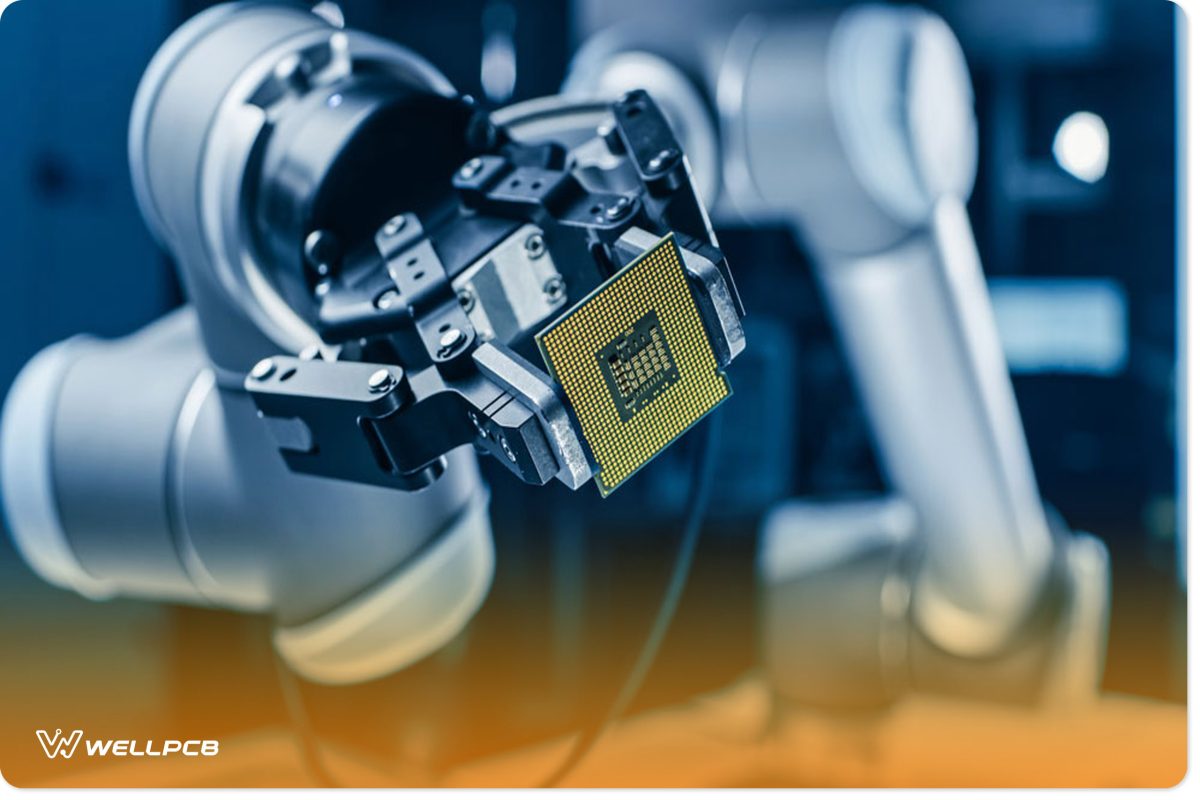
Robotics
You must find a capable manufacturer to ensure your boards have the highest quality and meet standards.
So don’t hesitate to contact us if you want to produce your microwave PCB.





